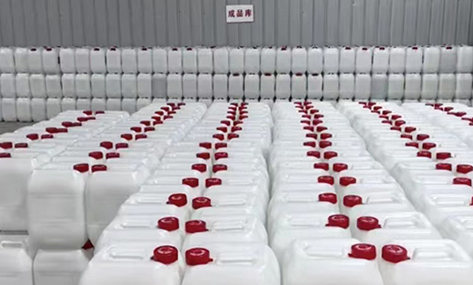
Nov . 04, 2024 03:56 Back to list
glacial acetic acid storage requirements
Storage Requirements for Glacial Acetic Acid
Glacial acetic acid, a clear, colorless liquid with a pungent smell, is an important chemical used in various industrial applications, including the production of plastics, solvents, and food additives. However, its hazardous nature necessitates strict storage requirements to ensure safety and maintain its integrity.
1. Storage Environment
The first consideration in storing glacial acetic acid is the environment. It must be stored in a cool, dry place away from direct sunlight and sources of heat. The ideal storage temperature is typically below 25 °C (77 °F), as elevated temperatures can increase the rate of evaporation and the risk of decomposition. Proper ventilation is also essential to dissipate fumes that may occur during storage.
2. Container Material
The choice of storage container is critical. Glacial acetic acid is corrosive and can react with certain materials. Therefore, it should be stored in containers made of compatible materials such as glass, polyethylene, or Teflon. Metal containers, particularly those made of iron, aluminum, or galvanized steel, should be avoided due to the risk of corrosion. Ensure that all containers are tightly sealed to prevent vapor release and contamination.
glacial acetic acid storage requirements

Proper labeling is essential for the safe storage of glacial acetic acid. All containers must be clearly marked with the chemical name and appropriate hazard symbols according to the Globally Harmonized System (GHS) of Classification and Labelling of Chemicals. This practice not only helps in identifying the substance but also alerts personnel to handle the material with caution. Additionally, signage indicating the presence of corrosive materials should be prominently displayed in storage areas.
4. Spill and Leak Management
In any facility where glacial acetic acid is stored, it is vital to have a spill prevention and response plan. Secondary containment systems, such as bunds or spill trays, should be used to prevent leaks from contaminating the surrounding area. Personnel must be trained in emergency response measures, including the use of appropriate personal protective equipment (PPE) such as gloves, goggles, and acid-resistant clothing. An accessible eye wash station should also be provided in case of accidental exposure.
5. Regulatory Compliance
Finally, adhering to national and local regulations regarding the storage of hazardous materials is crucial. Facilities must comply with guidelines set forth by organizations such as the Occupational Safety and Health Administration (OSHA) and the Environmental Protection Agency (EPA). Regular audits and inspections should be conducted to ensure that storage practices meet regulatory requirements.
In conclusion, the safe storage of glacial acetic acid is paramount to protecting human health and the environment. By following recommended storage practices, such as maintaining a controlled environment, using compatible containers, ensuring proper labeling, managing spills, and complying with regulations, facilities can effectively minimize risks associated with this hazardous material.
-
SmartAgri Solutions - Precision Farming&Soil Monitoring
NewsJul.13,2025
-
Industrial Solutions-Example Inc.|Smart Manufacturing&Energy Efficiency
NewsJul.13,2025
-
Food Grade Glacial Acetic Acid-Pure Quality|High-Purity Acetic Acid,Food-Grade Chemical
NewsJul.13,2025
-
Industrial Efficiency Solutions-NextGen Technologies|Advanced Automation&Data-Driven Analytics
NewsJul.12,2025
-
Smart Manufacturing Solutions-Example.com|Enhance Efficiency&Reduce Costs
NewsJul.12,2025
-
Food grade glacial acetic acid
NewsMar.07,2025
